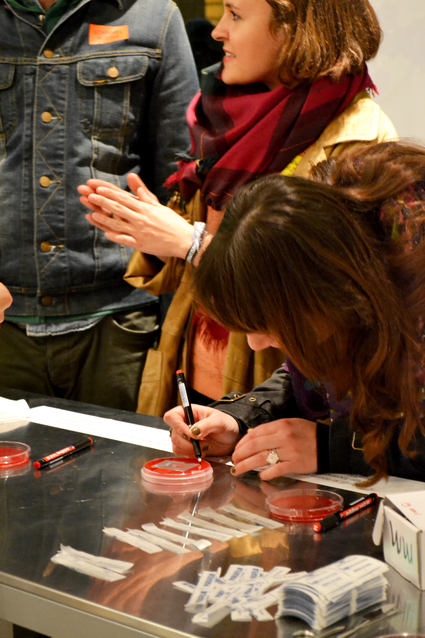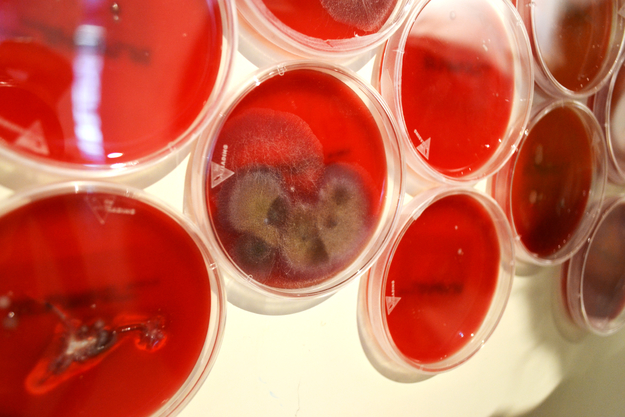For Museum Nacht 2011 we collected the bacterial imprints off the fingers of our visitors and linked them to their online profiles. Mapping the petri-dish samples based on which location or museum the visitors came from, we created a visual mapping of how bacteria travels.
Intake Procedure
After filling out the Schimmeltest designed especially for our exhibition by EGBG, our visitors were able to leave their personal fungal imprint on our walls. Each visitor had to place their fingers on the RFID-tagged petri dishes, label them with their name and location of where they came from, and seal them with parafilm. The visitors then linked their petri dish with their Facebook or Mediamatic profile at one of our ikCams.
Mapping
Once the petri dishes were connected to their unique owner digitally, we mapped them onto our wall. The mapping was based on the location of where the visitor just came from, which was usually one of the 45 museums that were part of Museumnacht. This way we could form a fungal mapping of the different museums around us.
Fungal Growth
The one-thousand petri-dish samples will sit in a specially designed heated tent for approximately 3 weeks, creating the ideal condition for the bacteria to grow and multiply. We have been taking pictures of the dishes with our mobile ikCam software, which automatically posts the petri dish image onto the user's profile page. You can find all of the images here.
Visitors can then come and scan the wall of petri dishes with an ikPod RFID reader, showing which online profiles are connected to which bacterial samples.





